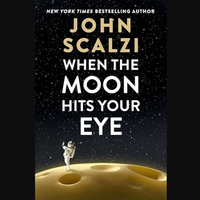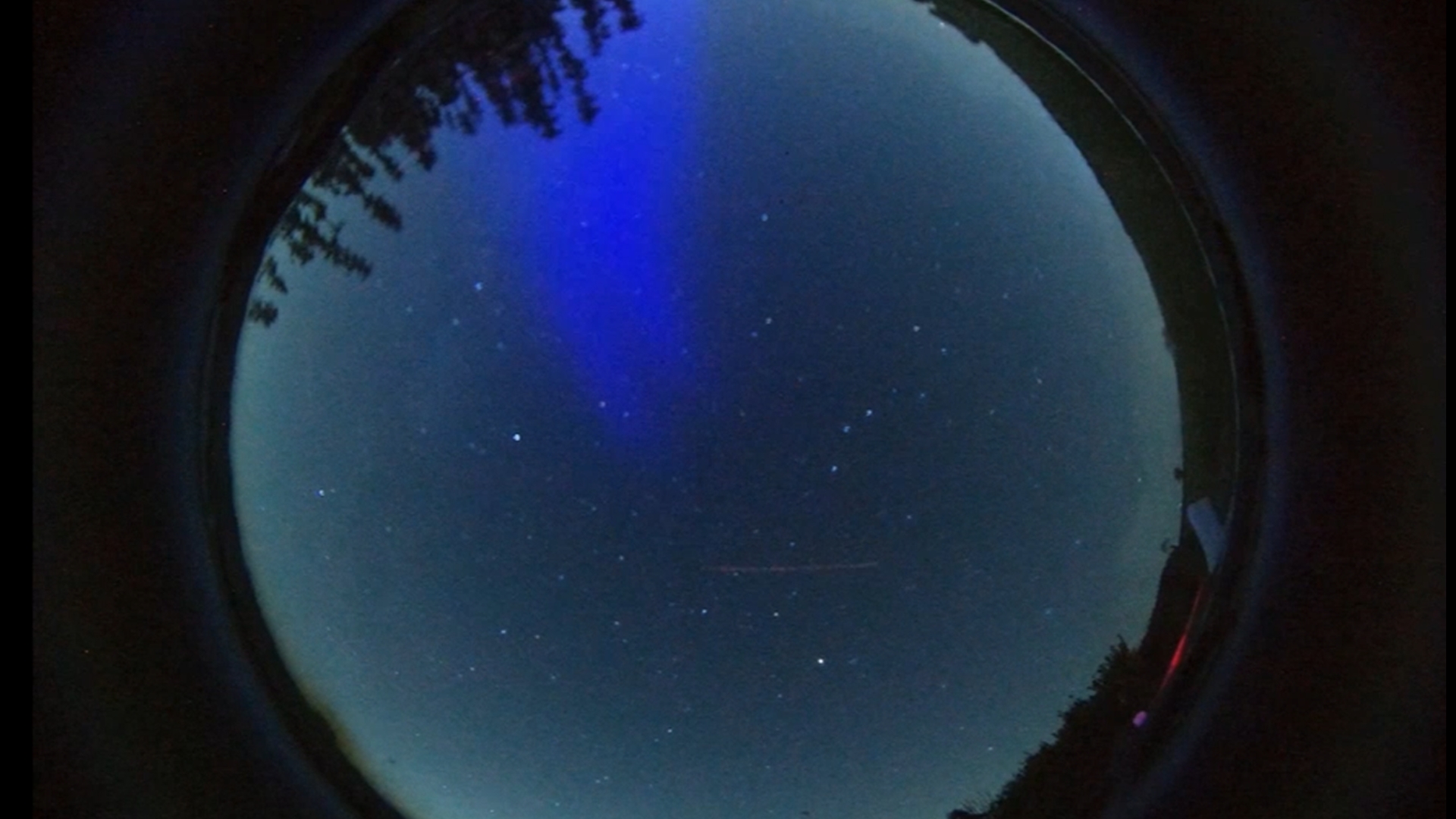'What choices do you make when you are turning the moon into cheese?' Author John Scalzi on new novel 'When the Moon Hits Your Eye'
In this interview, Scalzi reveals where to find him as the moon turns into cheese.
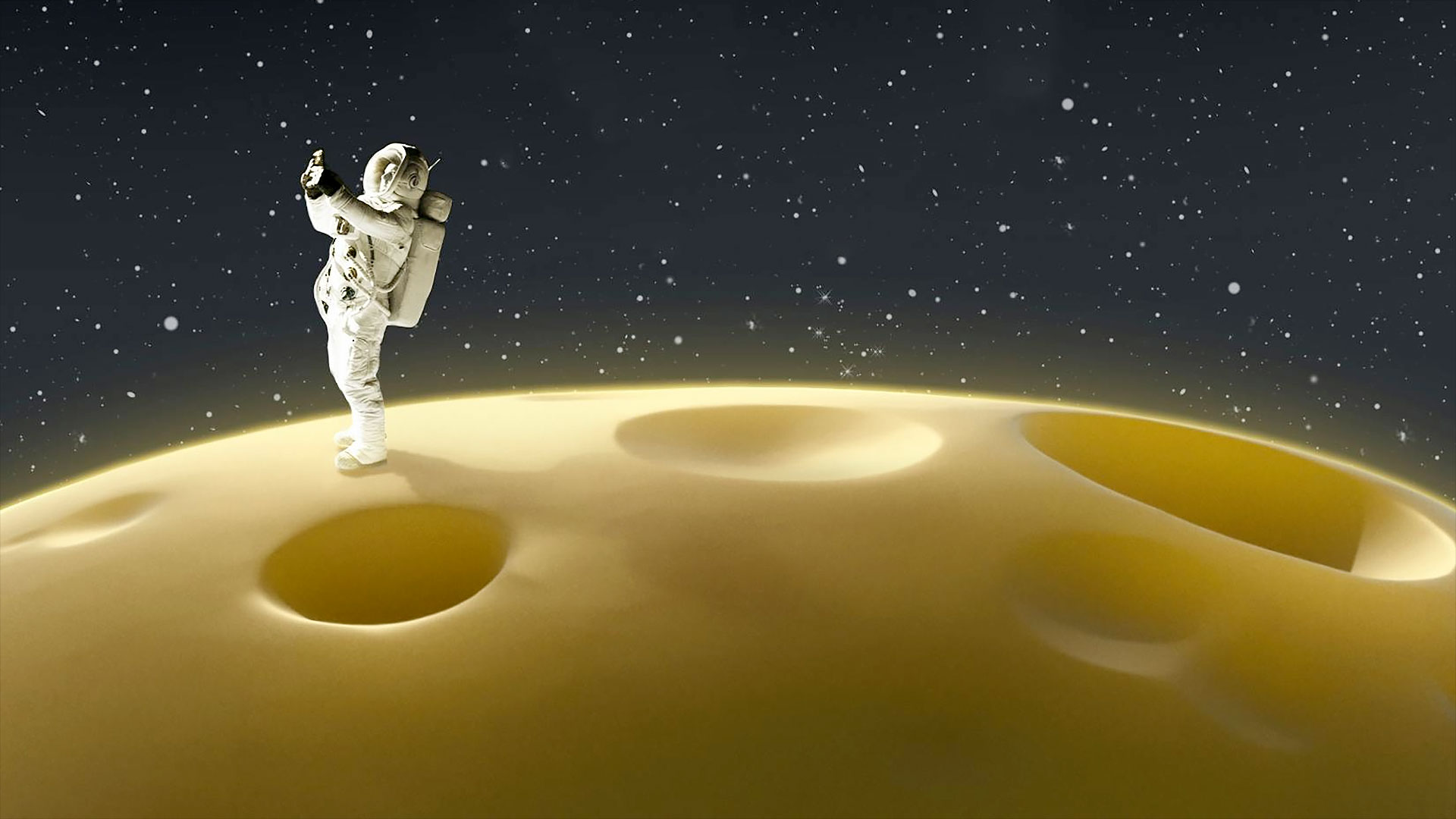
John Scalzi cased out the Armstrong Air and Space Museum before getting to work on his new book, "When the Moon Hits Your Eye."
The bestselling science fiction author, who is known for injecting humor into his stories, did not arrange for a tour of the Ohio museum or let the staff know that he was coming. He bought his ticket just like any other visitor. Had they noticed him, though, they might have thought he was there to rob them of their moon rock, given the attention he paid to where the surveillance cameras were and what was protecting the Apollo 11 lunar sample from prying hands ... and noses and mouths, but more on that soon.
"I went to the Armstrong Air and Space Museum very specifically so I knew what the layout of the place was, so I could see the moon rock there for myself and so when I wrote about it, it would be reasonable to what is actually there," said Scalzi in an interview with collectSPACE.com. "They had no idea."
Bestselling science fiction author John Scalzi wonder what would happen if the moon really was made of cheese in "When the Moon Hits Your Eye" from Tor Books.
Had the docents approached him and asked why he was interested in the moon rock, they might not have believed him anyway. In "When the Moon Hits Your Eye," released today (March 25), it is Virgil Augustine, the museum's (fictional) executive director, who comes to realize what has happened, however impossible it might seem.
A brief excerpt from the first chapter:
"Was the display tampered with?" Virgil asked.
"Not until we opened it," Bud said. "It was sealed up tight."
Virgil got in close to the display and breathed deeply. The odor was neither the burnt charcoal that astronauts claimed the moon smelled like, nor the sweet chemical smell of children's modeling dough. It was something far more familiar.
Before he could stop to think what he was doing, Virgil reached out to the object inside of the display, scratched it with a fingernail, and put his finger in his mouth.
"Virgil, what in the hell —" Chief Wopat began.
"It's cheese," Virgil said.
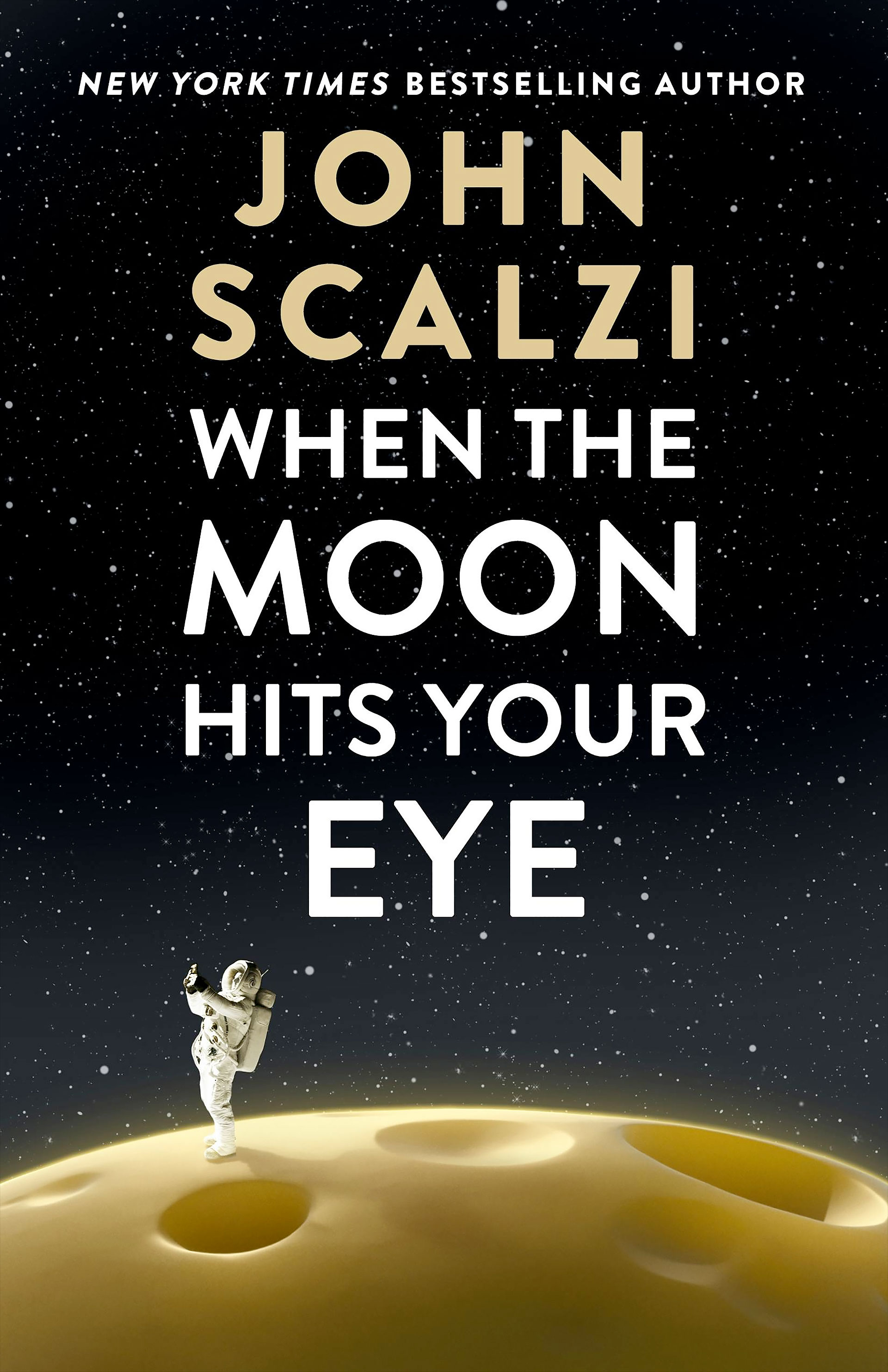
Like Virgil and the other characters in Scalzi's book, it is best for readers to not know much more about the moon's made-of-cheese status before reading "When the Moon Hits Your Eye," so we won't share any further plot details here. Rather, collectSPACE spoke with Scalzi about his inspiration for writing the book, the research he conducted and his experience crafting how the world would react when a children's fable comes true.
This interview has been edited for length and clarity.
collectSPACE (cS): Was there a particular moment in your life that it just struck you, or how do you come up with the idea of writing a book about the moon turning into cheese?
John Scalzi: It was something that had been just rolling around my brain for a while, simply because it was just such an absurd idea that it almost felt like a challenge. You know, was this something that I could make something out of?
cS: Did you search to see if anyone else had written a book about the moon turning to cheese?
Scalzi: I didn't, but if someone did, it wouldn't have necessarily stopped me because there are so few super original ideas. You just accept that most of what you're doing is not about what's original, but what you can bring to that particular topic that nobody else has.
There are lots of children's books about the moon being made of cheese, but they're all picture books, so I felt that this was a pretty safe subject. Also, as soon someone mentions the topic, people are like, 'Oh, it's like Wallace and Gromit,' because they go to the moon and it is cheese [in "A Grand Day Out With Wallace and Gromit" released in 1989].
This was something I was reasonably confident had been unexplored territory in the adult literature format, and certainly in the manner in which I did it, which was to structure it around a lunar cycle, rather than just one or two main characters.
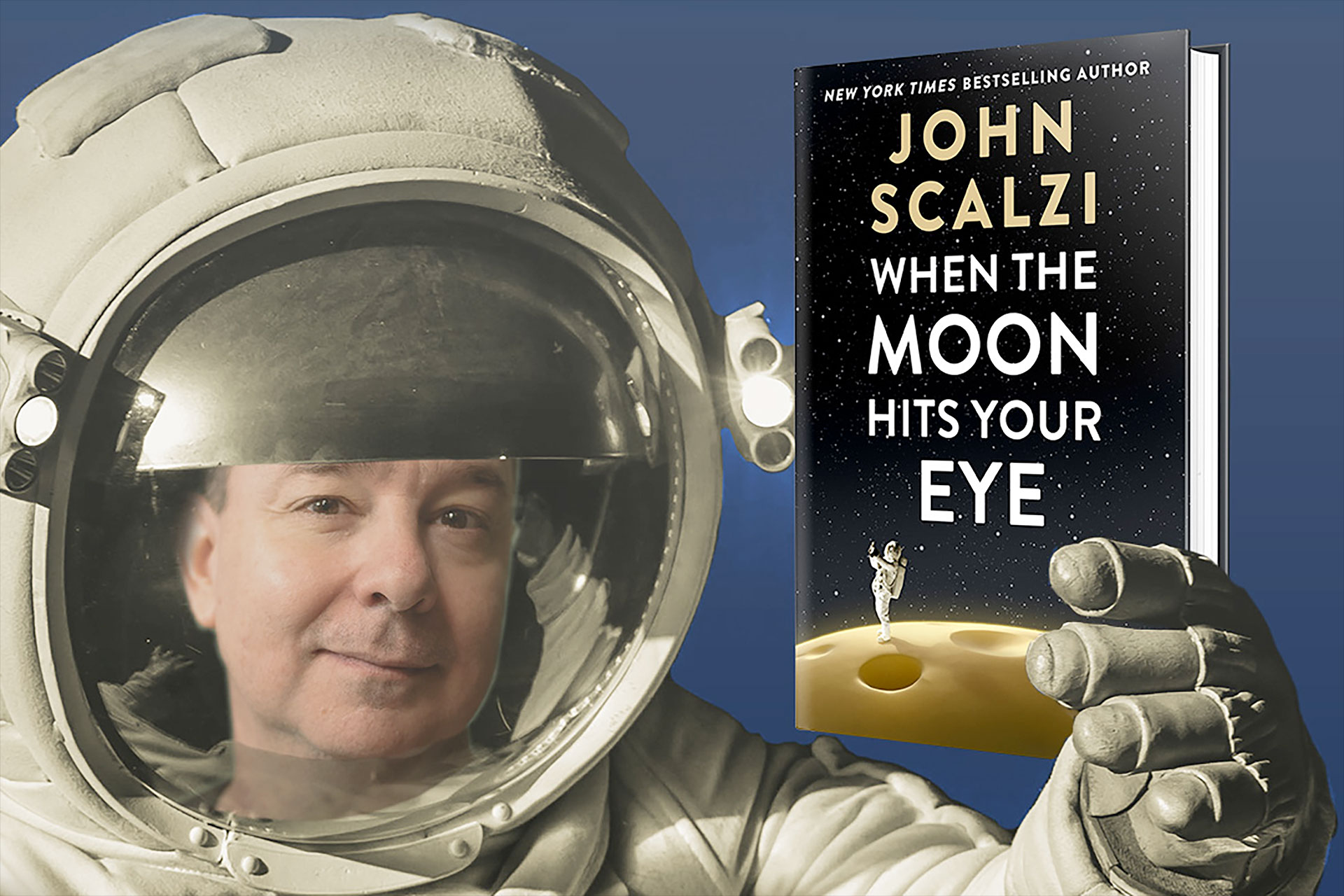
cS: Since you mentioned it, the book's chapters and the pacing of the story is based on one lunar cycle (from just after a new moon to a full moon and back). Did you have that idea from the start or did it come up as you were researching?
Scalzi: The nice thing about doing a story about the moon turning to cheese is that you get to incorporate many aspects of the moon. So, certainly, the orbit being 29 and a quarter days meant that you would have 29 chapters, or you could have 29 chapters, each corresponding to a particular day, and then plus or minus some material on either side.
For me, when I was thinking about it, it made sense as we have basically a month to watch everybody deal with the moon turning to cheese.
The structure of it also immediately recommended itself as well, which meant that it was a different kind of novel than most are. Most of the time, novels will focus on one or two main characters and in this one we have so many characters who share their point of view. Generally, I liked the idea that each character was related to the lunar cycle and not just one particular character throughout.

cS: How much about the moon did you know going into writing this and how much research did you feel you needed to do in order to write this story?
Scalzi: As it happens, in 2003 I wrote a book about astronomy, which is called "The Rough Guide to the Universe," and I have always loved astronomy, so the ambient level of knowledge that I have about the moon and everything else was fairly high.
But it was less about the factual aspects of it as it was about making sure that the absolute fantastical aspects of it, like turning the moon into cheese, were done in a way that seemed, within the context of the story, reasonable. Like what choices do you make when you are turning the moon into cheese?
As an example of that, one of the first things that I decided that I was going to do was to keep the mass of the moon the same, for two reasons. First, that allowed the moon to be larger in the sky, so it would be obvious to anybody looking up that something had happened.
That, and I didn't want to have to figure out things like tides and orbital dynamics and everything else that depends on the mass of the moon. It was going to be way too complicated for what I needed for the story and kind of besides the point. So by making it the same math, the moon could just do what the moon does and I could just go on with the story.
cS: As you mentioned, the book is told from the perspective of many different people, including museum curators, NASA astronauts and White House staff members, but also patrons at a diner and members of a small church. You name some real-life people and make hints at other fictional characters being based on real-life people, but are any of them you?
Scalzi: When the staff at the Armstrong museum are reviewing their surveillance tapes, looking for who might have swapped out the moon rock and they are looking at the last guy who came through and then leaves in his MINI Cooper, that's me! I literally put my visit to the museum in the story.
"When the Moon Hits Your Eye" by John Scalzi was released Tuesday (March 25) by Tor Books.
Get the Space.com Newsletter
Breaking space news, the latest updates on rocket launches, skywatching events and more!
Follow collectSPACE.com on Facebook and on X at @collectSPACE. Copyright 2025 collectSPACE.com. All rights reserved.
Join our Space Forums to keep talking space on the latest missions, night sky and more! And if you have a news tip, correction or comment, let us know at: community@space.com.
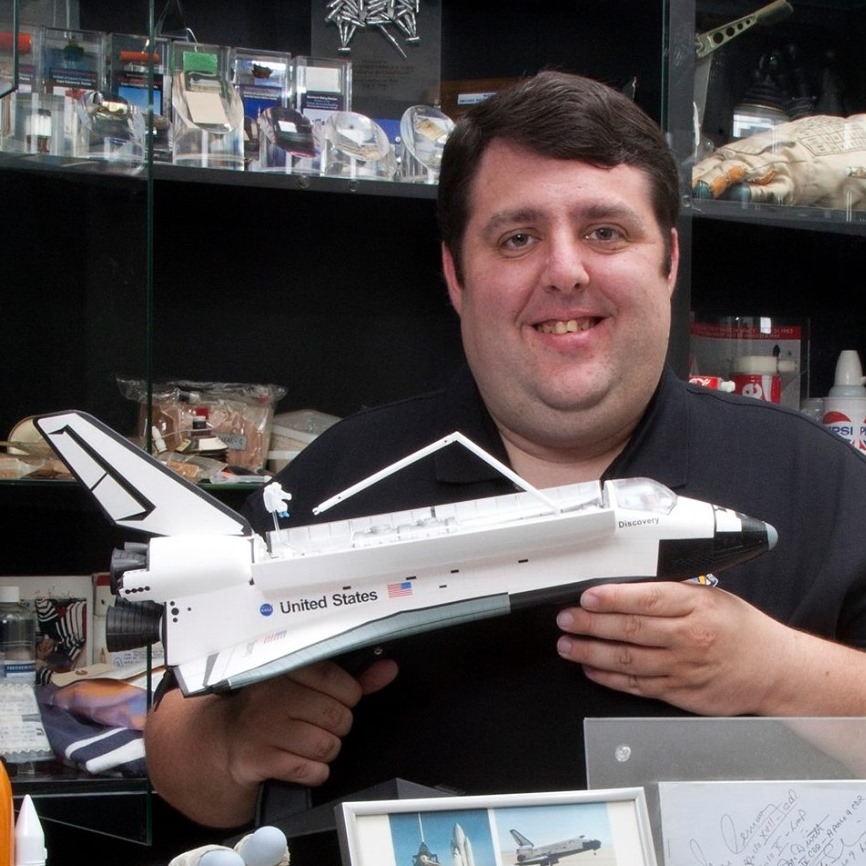
Robert Pearlman is a space historian, journalist and the founder and editor of collectSPACE.com, a daily news publication and community devoted to space history with a particular focus on how and where space exploration intersects with pop culture. Pearlman is also a contributing writer for Space.com and co-author of "Space Stations: The Art, Science, and Reality of Working in Space” published by Smithsonian Books in 2018.In 2009, he was inducted into the U.S. Space Camp Hall of Fame in Huntsville, Alabama. In 2021, he was honored by the American Astronautical Society with the Ordway Award for Sustained Excellence in Spaceflight History. In 2023, the National Space Club Florida Committee recognized Pearlman with the Kolcum News and Communications Award for excellence in telling the space story along the Space Coast and throughout the world.
You must confirm your public display name before commenting
Please logout and then login again, you will then be prompted to enter your display name.

